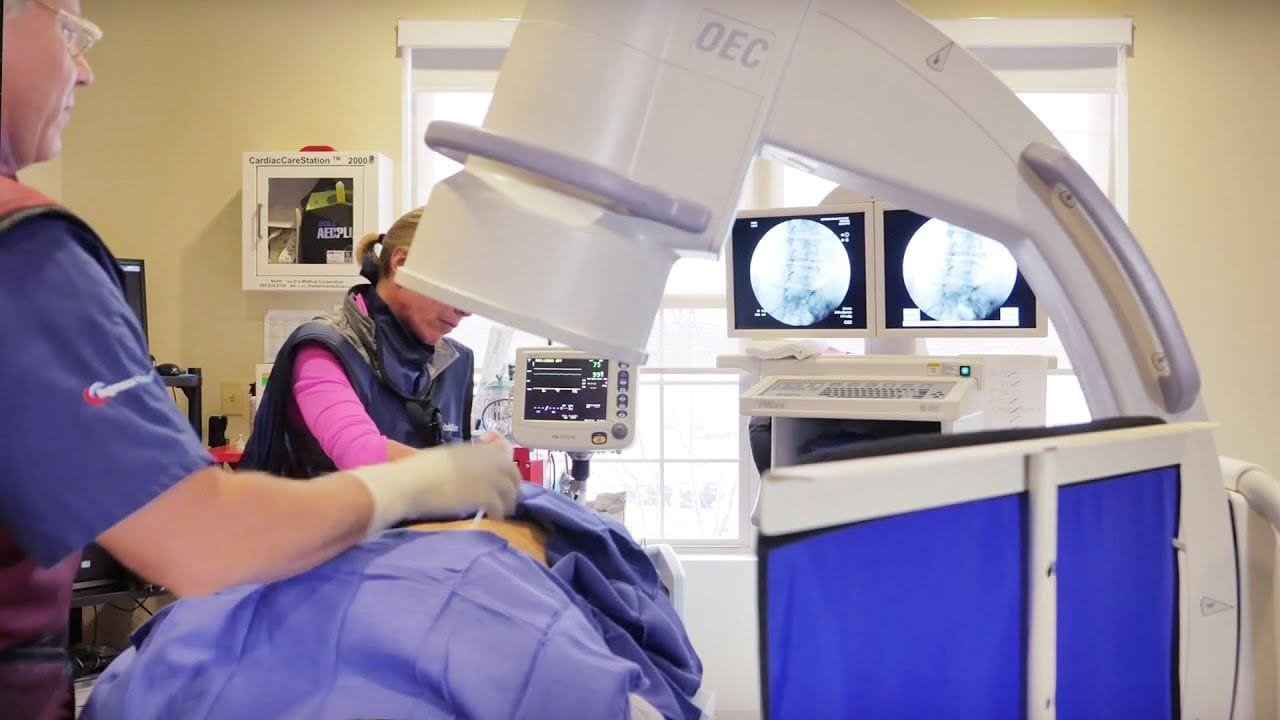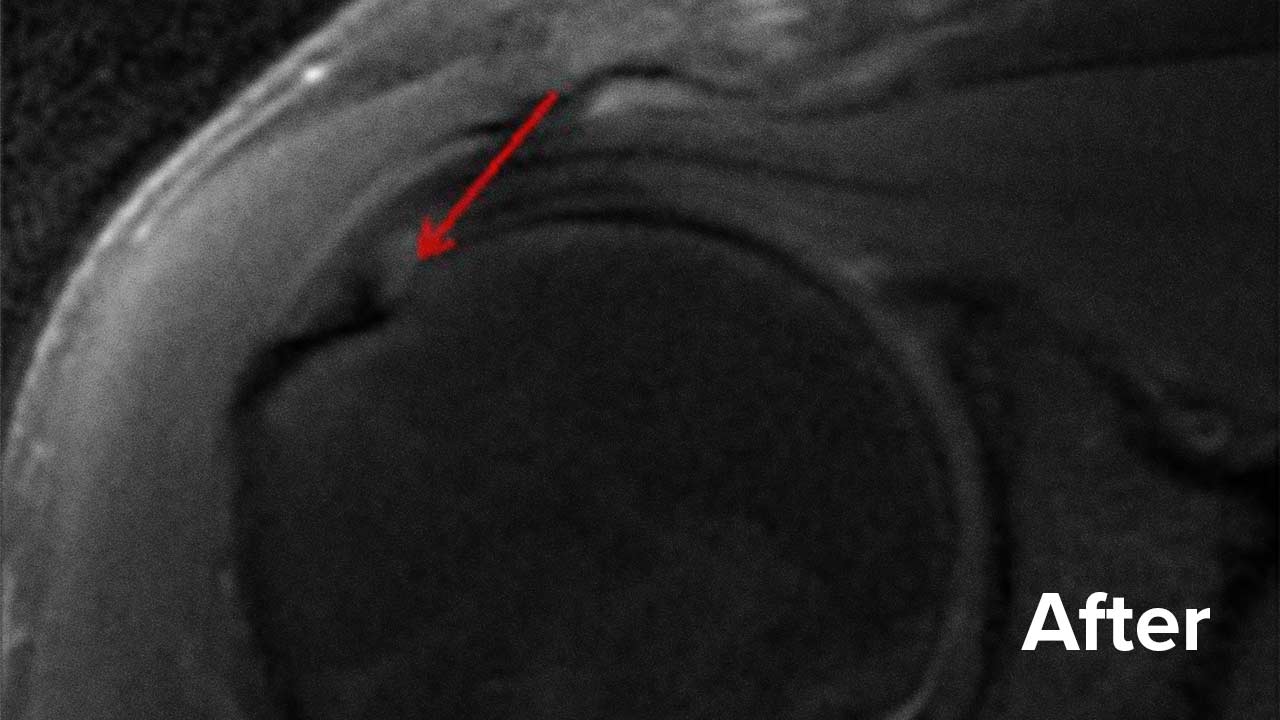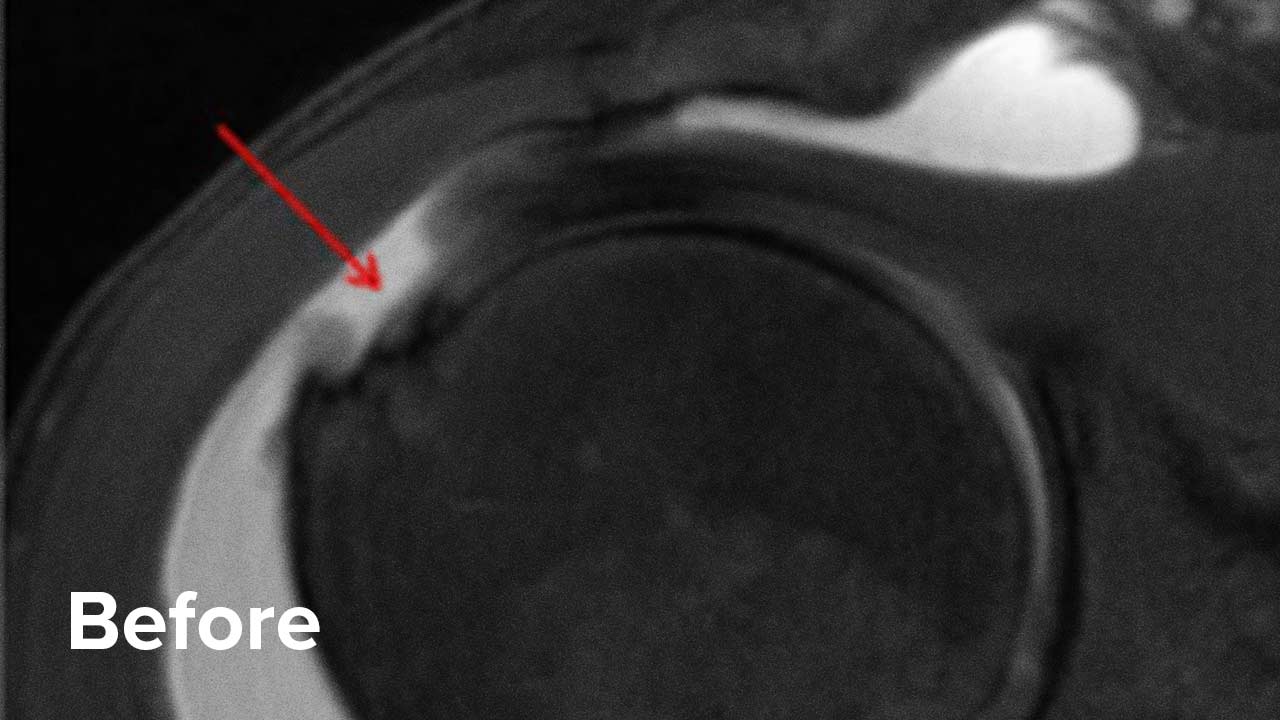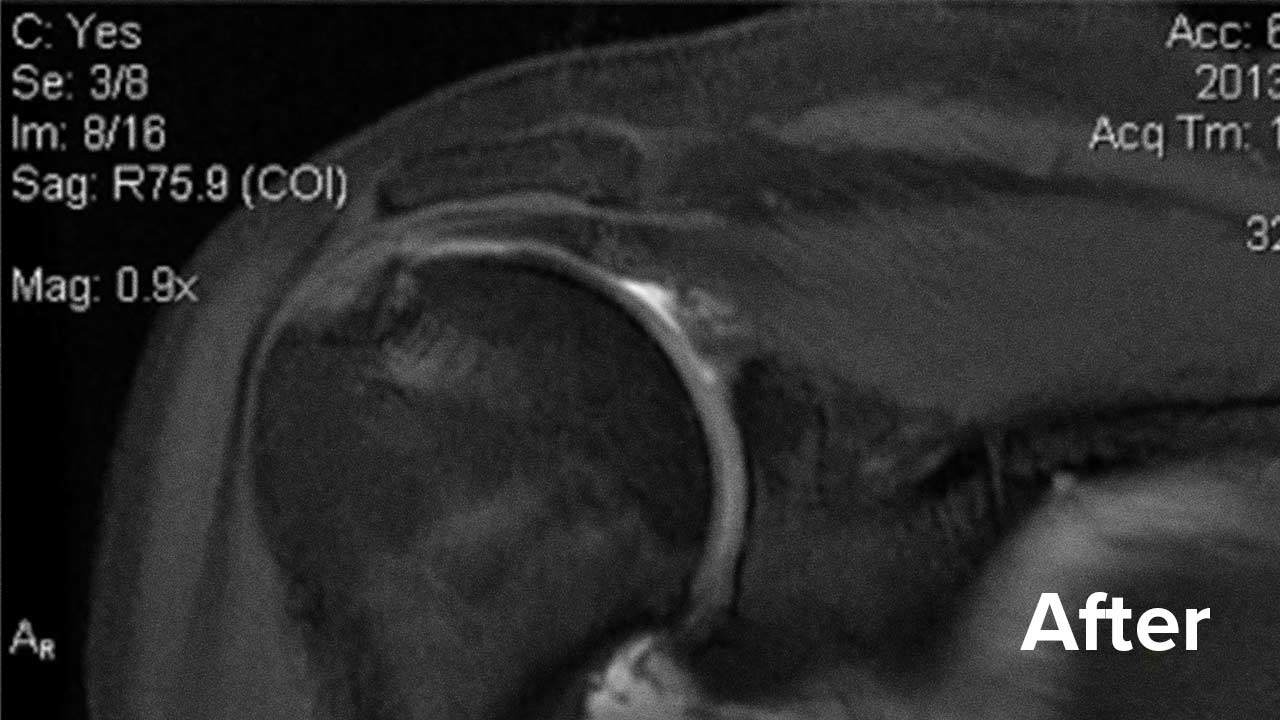Shoulder Pain Treatment Without Surgery
Are You a Regenexx Candidate?The shoulder joint is the most mobile joint in your body. But this mobility comes at a price. The body’s constant struggle to keep the joint stable can cause problems when there’s an injury or degenerative disease.
Most patients considering surgery for a shoulder injury, degenerative condition, or osteoarthritis are looking for pain relief. However, research shows that shoulder surgery isn’t all that effective for many patients.1 While your shoulder MRI could indicate a tear or degeneration, it may not be the cause of pain.2
Regenexx Alternative to Shoulder Surgery
What Types of Shoulder Injuries Can Be Treated With The Regenexx Approach?
Various types of shoulder injuries may benefit from procedures using Regenexx injectates. However, the injuries most often seen by physicians in the licensed Regenexx network are:
- Rotator cuff tears
- Labrum tears/ SLAP tears
- Shoulder osteoarthritis and degeneration
- Shoulder instability
- Separated shoulders
- Biceps tendon tears
- Avascular necrosis or osteonecrosis
- Frozen shoulders

Can I Avoid Shoulder Surgery?
In many cases the answer is yes. The Regenexx approach is an alternative to shoulder surgery that help your body use its healing abilities to treat pain and promote a more speedy recovery.
Am I a candidate?The Regenexx Approach For Shoulder Pain
The Regenexx approach offers non-surgical alternatives that use precise image-guided injections of your body’s own natural healing agents to treat shoulder injuries. Procedures using Regenexx injectates utilize either platelet-rich plasma or your own bone marrow concentrate (contains stem cells) to help you avoid shoulder surgery. Once you’ve been evaluated, your physician will customize a treatment plan based on your specific needs to help reduce pain and improve function.
Before and After Shoulder Repair MRI Images
Below are the outcomes of two patients with Regenexx protocol done instead of surgery.
Scroll the arrow to the right to see the MRI of the rotator cuff before the treatment and to the left to see the outcome. The BEFORE shows a torn rotator cuff. The arrow points at a gap where the tendon should be. Once treated, the area will look like a dark band going diagonally, as seen on the AFTER.
Patient 1 MRI
Patient 2 MRI

Webinar: Alternatives to Shoulder Surgery
Learn the latest about interventional orthopedics, and how the Regenexx approach may help treat your shoulder injury without surgery.
Register for the webinarPatient FAQs
The shoulder is a shallow ball-and-socket joint. The ball is called the humerus bone, and the socket is called the glenoid. The lip around the socket is called the labrum (Latin for “lip”), and its main job is to keep the shoulder ball inside its shallow socket. Ligaments and the rotator cuff also help keep the shoulder in place.
Shoulder instability occurs when tendons and ligaments get stretched, torn due to trauma, or simply worn out due to age and allow too much motion in the joint. This additional motion leads to arthritis as sections of the joint are exposed to more wear and tear, bone spurs as your body’s solution to “shoring up” an unstable joint, and tears and stretching of the ligaments as they deal with forces they’re not designed to withstand.3
Get started to see if you are a Regenexx candidate
To talk one-on-one with one of our team members about how the Regenexx approach may be able to help your orthopedic pain or injury, please complete the form below and we will be in touch with you within the next business day.
References
1. Dezaly C, Sirveaux F, Philippe R, Wein-Remy F, Sedaghatian J, Roche O, Molé D. Arthroscopic treatment of rotator cuff tear in the over-60s: repair is preferable to isolated acromioplasty-tenotomy in the short term. Orthop Traumatol Surg Res. 2011 Oct;97(6 Suppl):S125-30. doi: 10.1016/j.otsr.2011.06.006. Epub 2011 Jul 27. PMID: 21798838.
2. Okamura K, Kobayashi T, Yamamoto A, Shitara H, Osawa T, Ichinose T, Takagishi K. Shoulder pain and intra-articular interleukin-8 levels in patients with rotator cuff tears. Int J Rheum Dis. 2017 Feb;20(2):177-181. doi: 10.1111/1756-185X.12581. Epub 2015 Apr 30. PMID: 25930944
3. Culham E, Peat M. Functional anatomy of the shoulder complex. J Orthop Sports Phys Ther. 1993 Jul;18(1):342-50. doi: 10.2519/jospt.1993.18.1.342. PMID: 8348135.





